Everest Base Camp and Gokyo Lakes



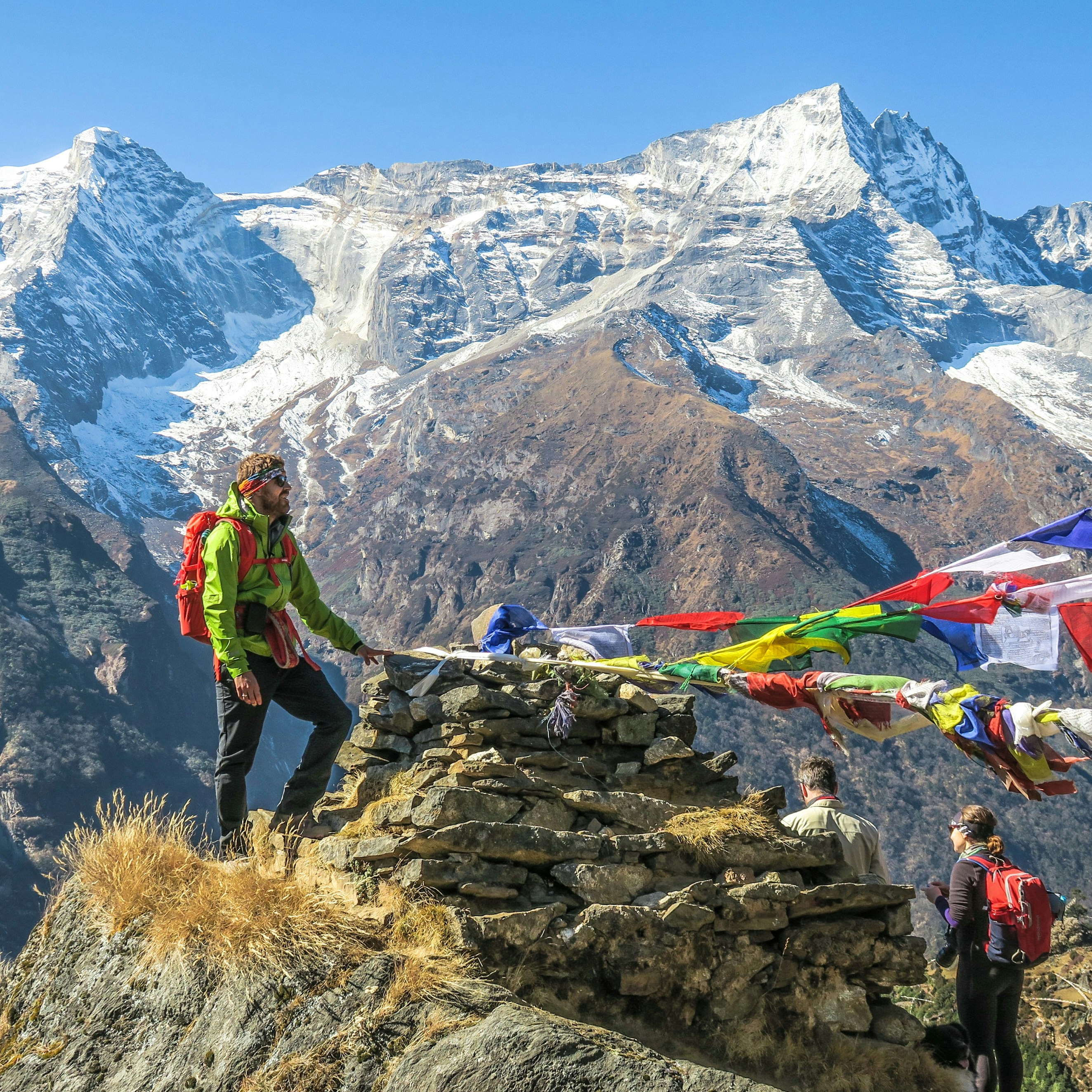

This trip is led by Jagan and the guiding team in Nepal.Meet your guides.
Itinerary
Upon your arrival at the airport in Kathmandu, you will receive a warm from your hosts and be transported to your designated accommodation, where you will complete the check-in process. Following this, you will have the opportunity to explore the vibrant Thamel district. In the evening, a delightful dining experience awaits at a renowned restaurant, allowing you to savor the flavors of authentic Nepali cuisine. Your trek guide will also conduct a comprehensive briefing, offering insights into the upcoming journey.
Today you'll drive to the remote town of Ramechhap (approximately 5 hours) - the location for your flight into the mountains the following day. A restful overnight stay in Manthali affords us the opportunity to recharge before we start the hike.
You'll take a small plane into the Everest region of the Himalayas - the views are simply breathtaking! Once in Lukla, you'll meet your trekking crew and hike along the Dudh Kosi River into Phakding where you will spend the night in a tea house.
Today you'll cross the world-famous Hilary Suspension Bridge as you make your way up to the capital of the Khumbu region - Namche Bazaar. This will be your first opportunity to catch a glimpse of the world's highest mountain, Mount Everest (8,848m).
The air is starting to get thin up at this altitude, so it's important to allow your body some time to adapt to the changing environment. You'll have an opportunity to explore Namche, as well as a short walk to an incredible viewpoint of Everest, Lhotse and Ama Dablam. For those who want to, there will also be an opportunity to visit the Hillary School and Khunde Hospital.
Today you'll reach 4200m as you hike through the Mong La Pass, with incredible views of the Dudh Koshi River. After lunch at a local tea house, you'll arrive in the village of Phortche Thanga, where you can visit a local monastery and receive a blessing.
The trail climbs steeply, passing through rhododendron forests and Yak settlements. The views of Khumbi La and Tawache are magnificent throughout the day.
Ascending higher through the forests, you'll notice the green landscape slowly starting to become more sparse. You'll arrive at Machhermo just after lunch with amazing views of Cho Oyu (8201m)
Start the day off with a hearty breakfast, before beginning your hike through the Khantega Gorge. You'll follow the river towards the Ngozumpa Glacier - the longest in the Himalayas. From here, it's time to enter the Gokyo Valley, which offers truly incredible landscape views of the Gokyo lakes and surrounding mountains.
Today you'll go on a few short hikes around the valley. It's important that you take things slowly and allow your body some time to acclimatise before pushing forwards towards higher altitudes. You'll be spoilt by the views of the surrounding mountains, including Mt Everest.
Just a small hike today, staying at a very similar altitude - great for acclimatisation. You'll trek towards the Cho La Pass, where you'll spend the afternoon relaxing before tomorrow's hike.
A steep hike up the Cho La Pass, with incredible views at the top. In the afternoon, you'll make your way to the village of Dhzongla.
You'll be trekking between mountain villages, as you get closer towards Everest Base Camp. Take an opportunity to rest in the afternoon and take in some of the views.
Today is the big day! You'll make your way around the Khumbu glacier, before arriving at Everest Base Camp. Enjoy some time visiting the icefall and taking in the views of the giant mountains around you. Depending on the time of year, you may even see climbers preparing to summit Everest. We return journey to Gorakshep, where we will spend the night, reflecting on the extraordinary achievement of the day.
At sunrise, you'll have an opportunity to summit Kala Patthar - the highest point on your trek. The mountain sits parallel to Everest and offers the best views of the mountain. In the afternoon, you'll arrive at Pangboche, where you'll spend the night.
Today you'll head back over the suspension bridge and into Namche. You will start to notice the change in the atmosphere as the air gets 'thicker'.
You'll head back down to Lukla, where you'll wave goodbye to your trekking crew, and get some rest before your flight the following morning.
Fly across the Himalaya's and into Ramechhap. From here, you'll be driven back to Kathmandu, where you can explore the city some more.
Your guide will take you back to the airport at any time today.
Your Guides
This adventure is led by a highly experienced Nepalese guiding team with deep roots in the Himalayas. Founder, Jagan, is a renowned mountaineer who began his career as a porter in 1998. He worked his way up to become a highly respected mountain leader and has summited Mount Everest along with over 25 other Himalayan peaks. Trained by the National Outdoor Leadership School (NOLS) in Alaska, Jagan is also a skilled outdoor instructor, accomplished trail runner, and winner of the grueling 1,600 km Great Himal Race in 2017. Joining him is a team of veteran trekking and climbing guides, many of whom began their careers as porters. Their collective experience spans thousands of kilometres of trails, from the Annapurna Circuit to the high passes of Everest, with qualifications ranging from wilderness first aid to advanced mountain rescue.
Guide qualifications and affiliations
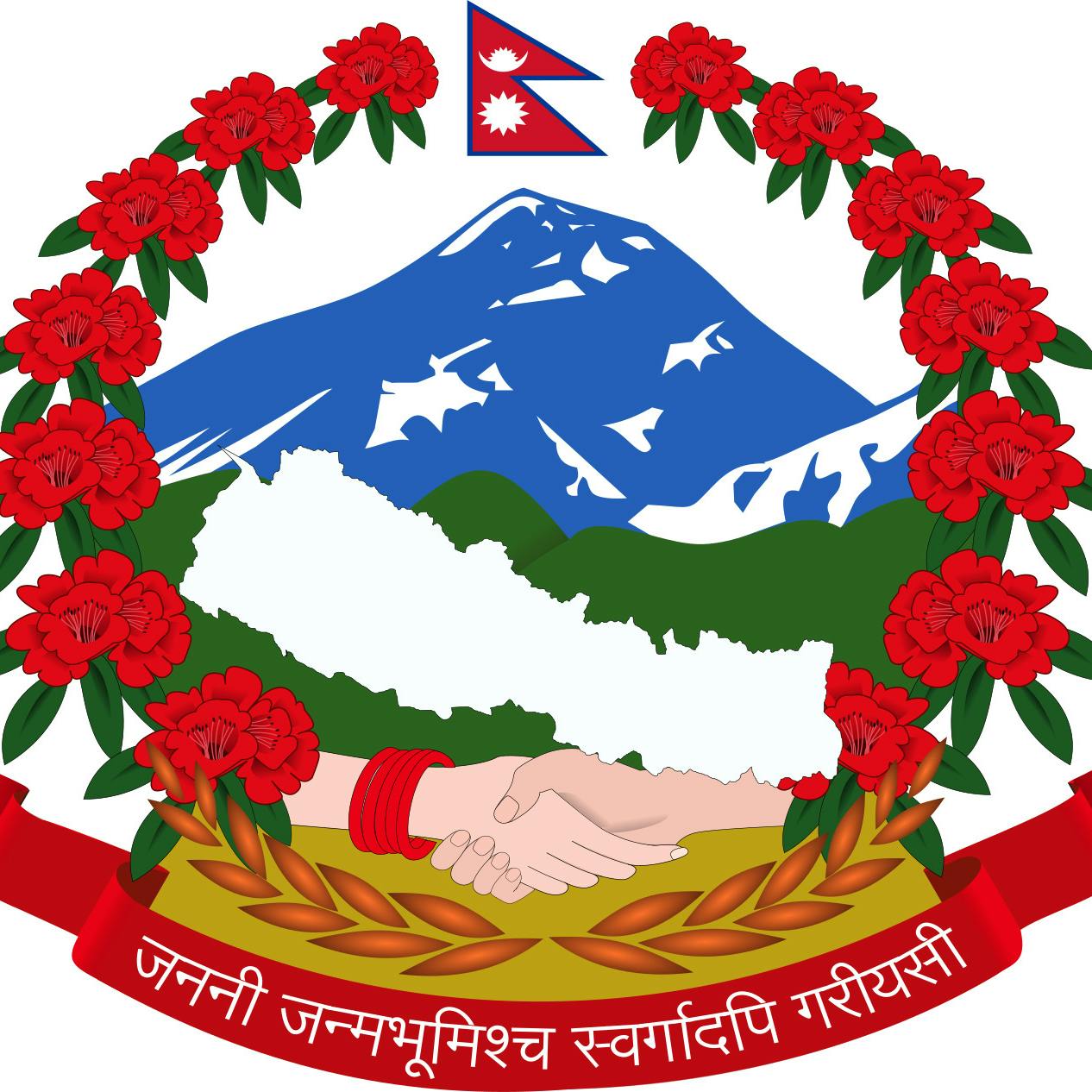
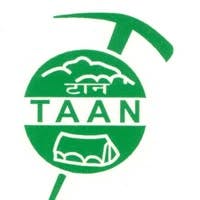
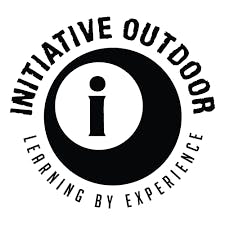
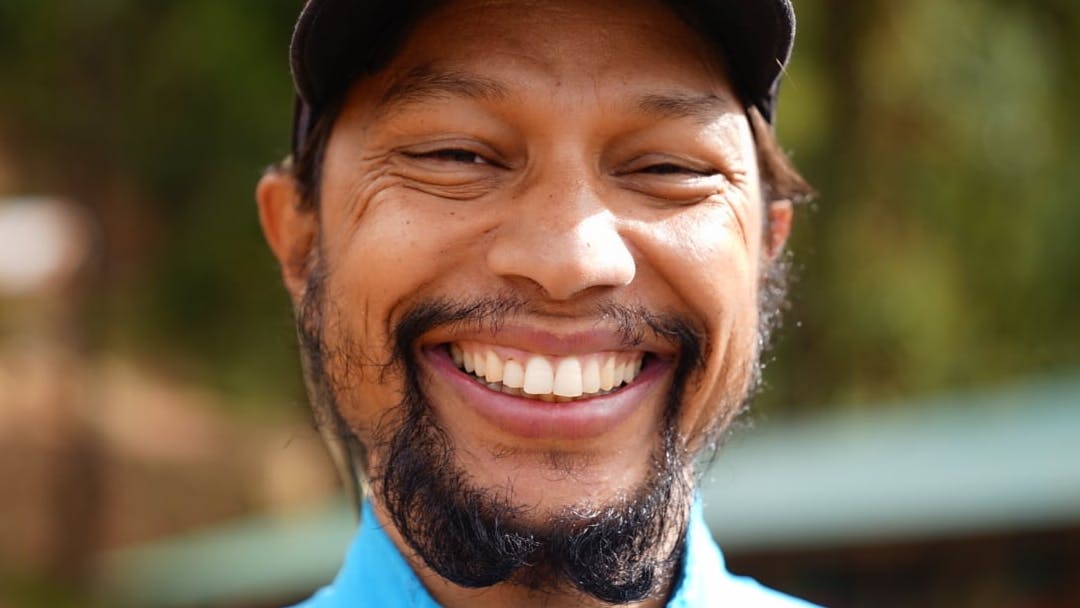
Guide qualifications and affiliations



Book Now
All trips are guaranteed to runFri 9 Oct 12:00AM Tue 27 Oct 12:00AM | $1,938 ($251 deposit) Based on $1,938 USD | Book Just 3 spaces |
Don't see your date? We may be able to open a new group or setup a private trip if there are 2 or more people in your party. Contact us.
You may also like: Everest Base Camp Trek
What's Included
Included
- Professional guides and porters.
- Transport (including car/bus to/from Ramechhap).
- Accommodation.
- Permits and national park fees.
- Water Purification Pills.
- Domestic flight ticket.
Not Included
- International flights to Kathmandu.
- Food: meals are available for purchase from the teahouses along the route.
- Warm showers in the tea houses.
- Tips and gratuities.
- Visa fees (typically US$50)
- Personal travel/rescue insurance.
Rated 5.0
14 verified reviews
Inca846
(Nov 2025)
Andy W
(Nov 2025)
Tom P
(Nov 2025)
Gordon M
(Oct 2025)
Meander
(Oct 2025)
James S
(Oct 2025)
E S Harrington
(Apr 2025)
Jethro
(Oct 2024)
FAQs
Before you go
Please see section above for trip inclusions and exclusions.
Everest Base Camp, and Gokyo Lakes requires you to trek at altitude for up to 8 hours per day, with a small 5-7kg rucksack. We recommended training with long hikes and/or a sport of your choice (e.g. jogging).
Documents: • Passport • Travel insurance details • Boarding passes for flights • Driver’s license (if needed) • Cash USD • Credit/Debit Card (Ensure you have $500 on your card in case an emergency helicopter evacuation is needed) Sleeping: • Sleeping bag (Comfort rating -15 Celsius recommended) • Sleeping bag liner (optional) Footwear: • Trekking boots: 3 or 4 season lightweight • City footwear: Sandals • Shoes for the plane and tea houses (Optional) Clothing: Please make sure that you have non-cotton clothing for trekking. • Base-layer t-shirts (e.g. running t-shirts) • Fleece/Windproof jacket • Waterproof jacket • Down jacket for warmth • Travel clothes and City Wear • Underwear • Base-layer trousers (optional) • Waterproof trousers • Trekking trousers • Trekking shorts (Optional) • Thick wool mountaineering socks • Lightweight and breathable trekking socks • Gloves and wool hat Other: • A daysack: 35 litres • Duffel or rucksack with straps to go over your back (Max 8kg of weight for porters to carry) • Dry Liner or Dry Bag • Water bottle/thermos: At least 2L. Nalgene bottles best. • Sunglasses • Suncream • Personal medication – Inhaler, Blister pads etc • General Toiletries, Contact lenses, Glasses (if needed) • Towel • Electronics - Head torch, travel adaptor, phone & charger • Lipsil • Book • MP3/Music and headphones • Travel wash • Hand sanitiser, wet wipes
Currently, all foreign nationals (except Indians) require a visa to enter Nepal. Visas are obtainable from embassies abroad, or on arrival at Kathmandu's Airport. If getting the visa at the airport be prepared for long queues. You will also need to pay US$30 for 15 days and $50 for 30 days visa. For a smooth immigration experience please make sure to carry the visa fee in cash.
The currency used in Nepal is Nepalese Rupees (NPR). You are unable to get NPR outside of Nepal and therefore you will need to exchange money in Kathmandu. The easiest currency to exchange is USD and Euro. You can also withdraw NPR from the ATM, but check with your bank about the relevant charges to do this. Please Note: If using your card in Nepal, then you will be charged a 4% service charge. Many places outside of Kathmandu and in the mountains will not accept card.
For this trip, the host needs at least 2 pax booked onto a date to confirm departure. If you are travelling solo please drop us a message beforehand to confirm existing groups. Your host may have other guests booked onto your date, in which case, you're good to go. In the case that there aren't any bookings on a date, we'll offer you an alternative date. Or we can quote you for a solo, private trek.
For this trip, there needs to be at least 2 pax booked onto a date to confirm departure. Your host will confirm the trip with you 3 months before the departure date. In the case that there aren't any bookings on a date, your host will offer you an alternative date. Or, they can quote you to upgrade to a solo, private trek. If none of those options suit you, you can request a deposit refund.
Yes! Travel insurance for trekking in Nepal is essential and protects you in the case of unforeseen circumstances including cancellations, injuries, equipment loss, flight changes and other events that could negatively impact your trip. For EBC, travel insurance should also cover emergency helicopter evacuation. Note that standard insurance often doesn't cover adventure activities. We recommend using specialist adventure travel insurers, like [Rise & Shield](https://riseandshield.com/), for your trip. Specialist insurers can cover unique scenarios, like trekking at altitude or emergency evacuation in hard-to-reach places, that ordinary travel insurance doesn’t cover. It's your responsibility to carefully check the details of your policy to ensure that you're covered for the specific activities you'll be carrying out.
On your trip
The average group size is 12 people, with a maximum of 14.
You stay in Hotels in the city of Kathmandu and Tea Houses whilst you are on the trek. The Hotel will be 3 stars. The Hotel is a twin shared room, but you can get your own room for the 3 nights for an additional charge. The hotel has access to showers and intermittent internet. If you would like to book any additional nights at the hotel, then please contact them directly. The teahouses are very basic. Some of them have squat style toilets, whilst others have Western style. Showers do not always offer warm water and most teahouses will charge you for use of a hot shower. Meals are available from teahouses, but all food has been carried up there by porters, so the higher up you go, the more expensive it becomes. Some teahouses do have access to the internet but at a cost.
It is customary in Nepal to tip guides and porters. Although it may not be customary to you, it is of considerable significance to the people who will take care of you during your travels. You can give any tips to your lead guide at the end of your trip. This will then be shared amongst the whole team. For full transparency, the lead guide will distribute the tips to the guides and porters in your presence. A good rule of thumb is around US$150 as a tip, although the amount you give is entirely your choice.
You can arrive at any time on the start date of your trip, and you’ll be picked up from the Airport. We recommend you fly out on the afternoon of the last date of your trip, as the internal flights the day before can be delayed in poor weather.
To be sure that you make your trek, or return from it, it may be necessary to make the flight to/from Lukla by a chartered helicopter. Helicopters can operate in some weather that aircrafts cannot. Should a helicopter be needed, it will be at the expense of the travellers. Please seek further advice about this from your insurance provider. Hopefully, weather delays will not occur, or if they do it will be for a limited time. Should the delays stretch into days and neither helicopter nor flight are a viable option, a collective decision will be made by the group on how to proceed.
While the itineraries are designed to allow for adequate acclimatisation, you are likely to feel the effects of altitude sickness and oxygen deprivation while on this trek. Please be aware that your guide may deem it unsafe for you to continue trekking at any time and arrange for you to descend to a lower altitude. When you go above altitudes of 2,500m, you need to allow your body time to acclimatise properly. When you are at altitude, you enter a lower oxygen environment. All relevant itineraries are designed to ensure that this process is met. So, what does this mean? This may mean that you may need to follow a longer route during the ascent phase to achieve the end goal. In this case, reaching Everest Base Camp. It may also mean that you must rest for a day or so at certain altitudes to ensure that our bodies acclimatise properly to the change in environment. This will allow you to ascend safely and have a much more enjoyable experience. High altitude sickness can happen to anybody – old or young, in good shape or not. Being in a hurry in the mountains of Nepal can be deadly. Your body can adjust to this altitude, but only if given enough time. If you find symptoms of altitude sickness, then you must descend at any cost. The symptoms are totally different from one person to another. Sometimes, you might feel a headache, you may feel you need to throw up, your fingers may go slightly numb, or you may start breathing heavily. If you have these kinds of symptoms, you should stop at this height. Drinking lots of water can help you out. You are advised to move slowly. Don’t rush, and ensure you protect yourself from the weather.
The Himalayas can change rapidly and the guides may be forced to change the trip itinerary accordingly. Travellers need to be prepared for all weather conditions. For more information please read the kit list provided. Low Season (End Nov - March) Daytime temperatures will be cooler, and the nights will be very cold. The days can bring winter storms, with regular snowfall above 2500m. Domestic flights are difficult at this time of year. Monsoon (Jun – Mid Sep) Temperatures are hot, with heavy rainfall almost every day. Trails can be very muddy, with frequent thunderstorms and high winds. Trekking season (End Mar-May & Mid Sep – End Nov) The most popular time to trek with mild – warm days and cold nights. The mornings tend to be clear, with some short rainfall in the late afternoons. In the higher altitudes, the temperatures often drop below freezing in the evening. At Everest Base Camp, the temperatures can drop as low as -15°C.
When travelling in countries such as Nepal, it's important to maintain vigilance with hygiene and food safety. Bring plenty of hand sanitiser. Water: While on the trek, you have a few options for water. You can buy bottled water from the tea houses, or you can fill up from the tap. If filling up from the tap, be sure to use the free purification tablets. These will be provided by your guide. Bottled water can be quite expensive to buy. Food: It may be a good idea to consider going vegetarian when you are trekking to Everest Base Camp. It is not uncommon for meat to be carried up to the Tea Houses for a few days in the hot sun by the porters.
Hotel Yukhang, J.P Marg, Thamel, Kathmandu 44600
Flights go from Ramechhap to Lukla. Because of the ever-changing weather, your internal flight may be cancelled or delayed for safety reasons. In this instance, your guides will book you onto the next available and safe flight at no extra cost. You will be required to pay for accommodation at the hotel for any additional nights not noted on the itinerary. All local flights (excluding helicopters) are included in the cost of your trek unless otherwise noted. It is important that you provide your passport information at the time of booking in order to process these tickets. Internal flight tickets are issued locally and will be given to you prior to the flight departure. In the event that the flights are cancelled on day 3 and 4 of your itinerary and no helicopters are available, it will not be possible for you to ascend to Everest Base Camp safely and with the required acclimatisation stops. In the unlikely event that the above does happen, the group will be taken on the Annapurna Base Camp trek. This requires no internal flights. Annapurna Base Camp is also a 16-day itinerary which reaches a maximum altitude of 4,130m, starting in the beautiful city of Pokhara.
Meals and snacks are not included. You can purchase food from the teahouses along the route. We recommend you allow US$500-800 for food on the trek.
Other FAQs
We recommend checking with your local doctor (or the Fit For Travel website in the UK)
The minimum age for this trek is 18 years, or 16 years with a parent/guardian.
Many different ethnic groups coexist in Nepal, and as a foreigner, you may be an object of curiosity. You may find that in certain places, the locals will want to talk to you or take pictures with you. You will almost certainly be subject to a bit of hustle and hassle in Nepal, getting a dose of it immediately when you arrive at the airport. Nepal live in a haggling society where almost every monetary transaction (outside of hotels and restaurants etc) involves haggling. It is likely that you will see beggars in Kathmandu. This can include children. Please be vigilant with your valuables when in this busy city.
Have a question
If you have any questions about this trip or want to speak with an expert, get in touch. We're ready to help.



Why Skyhook?
Join over 27,000 Skyhook adventurers who've used our platform to book directly with our vetted local guides, at local prices (we never markup).
Expert Local Guides
Experienced local guides, handpicked by us.
Best Prices
Never pay a markup on the local guide's price.
Exclusive Club
Earn loyalty rewards every time you travel.
Great Social Vibes
Small group tours provide a richer experience.
Stellar Feedback
Over 3,000 reviews, average of 4.9/5 stars.
















































